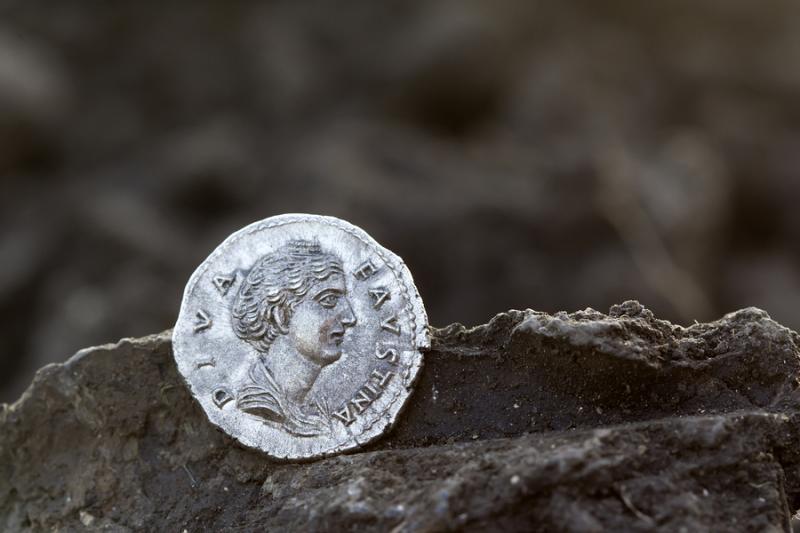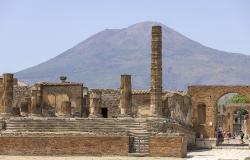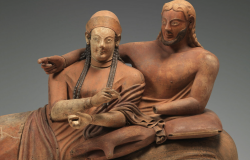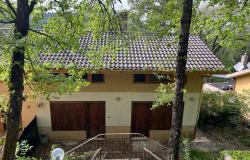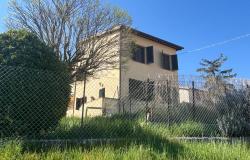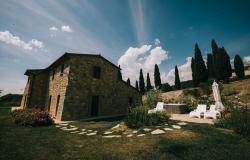-1-
Drink wine!
The ancient Romans thought that wine was essential to good health because they considered it an aid to digestion. They also thought that drinking wine sparked conversation during dinner. Wine was so important to them that the ancients called a meal without wine a “dog’s dinner.” So do as the ancient Romans—chat, nibble, sip and repeat.

-2-
Food not pharmacy
The ancient Romans followed the teachings of Hippocrates, the Father of Medicine, who famously wrote, “Let food be they medicine.” When patients were sick the first thing Hippocrates prescribed was a change in diet. There weren’t drug stores back then so ancient Romans tried to cure their illness by either eating-- or not eating-- certain foods.
Marcus Cato, the second-century BC Roman statesman, devotes several pages in his book, On Agriculture, to the “so-called Seven Good Things” about cabbage. According to him cabbage can treat wounds, reduce swellings, set dislocated bones, and even prevent drunkenness. The ancients believed the cabbage was sacred, “the prophet among vegetables.” A common exclamation at the time was, “So help me Cabbage!”

-3-
Dream on
Sigmund Freud wasn’t the only one into dreams. Hippocrates analyzed dreams to help diagnose what ailed his patients. He believed that while we sleep our body tries to communicate to our brain. For Hippocrates, if someone is healthy he dreams, more or less, about normal daily activities. But if a patient is ill, they might have odd dreams, which is the body’s attempt to explain what’s wrong. Hippocrates and ancient Romans thought, for example, that dreams about floods might mean kidney problems, dreams of trees falling might mean a man had reproductive problems and needed the equivalent of ancient blue pill. Interestingly, Hippocrates observed that patients often have frightening nightmares after a too-heavy meal. The ancient Romans thougth figs kept away nightmares. Don’t take any chances; try the Fig Focaccia recipe below.

-4-
Eat your veggies….raw
There are many modern health authorities and chefs who advocate a raw-foods-only diet, a notion with its roots in antiquity. Galen, physician to Emperor Marcus Aurelius, recounts a story of a medical student who “resolved never to light a fire.” Eating only raw foods, the student “stayed healthy during all these years.” Galen wrote extensively on healthful eating and recommended raw salads dressed with oil, honey, and vinegar for good digestion. For an enticing accompaniment for raw beggies try the Olive Puree.

-5-
Don’t dine solo
Dinner in antiquity was almost always a social affair shared with a few close friends at someone’s home. The ancient Romans actually believed that eating alone could give you indigestion because without fun conversation you might eat too much and too fast.

-6-
Exercise
Exercising in the town gymnasium or public baths was part of everyday Roman life. Hippocrates wrote, “Walking is a natural exercise, much more so than other exercises.” Galen, a first century Roman physician, was such a prolific writer that his complete works have yet to be fully translated. In one of his books, On Exercise with the Small Ball, he recommended sports as an excellent and economical way to stay fit.
In antiquity, Roman citizens considered it a virtue to take care of their bodies, believing it demonstrated their self-control and discipline. I chuckled at Hippocratic’s advice for those with sore, over worked muscles, “get drunk once or twice” and have “sexual intercourse after a moderate indulgence in wine.” When I asked a sports doctor Dr. Andrew Rosen about this he thought it was a great idea, “It’s sort of like the modern-day muscle relaxants I prescribe.”

Like this article? Don't miss "Dinner, Ancient Roman Style."
-7-
If it’s from the water, eat it
Ancient Romans, like modern Italians, love fish, not surprising for a country with so much coastline.
The ancient Romans enjoyed a fermented fish sauce called “garum” or “liquamen” which they manufactured and distributed throughout the Mediterranean and northern regions of Europe. This all-purpose salty condiment topped everything from vegetables to meats, and was used as we might Worcestershire or soy sauce.
Archeologists recently excavated an amphora, or large clay vessel, at the site of one Roman ruin in England. The outside of the vessel reads, "Seasoned tuna garum, for the pantry, excellent and of high quality.”
I experimented with making liquamen from a recipe in an ancient text. It called for several pounds of assorted fish such as smelts and mullet to be covered in salt and left to ferment, uncovered, for two to three months. It is then strained and . . .well, I never got that far. After 5 days, my next-door neighbor sheepishly knocked on my door and asked if my cat had died. As I don’t own a cat, I knew the odorous culprit was the liquamen. In the spirit of good neighborliness, I discontinued my fermentation experiment.
Luckily for us there’s a lovely fermented fish sauce, called colatura, which is still made today in Southern Italy.

-8-
Sweets in moderation
Ancient philosophers wrote often about healthful eating. Plato, for example, noted that sugar should be avoided by all athletes saying, “something which all men in training understand—that if one is to keep his body in good condition he must abstain from such things all together.” However, even Plato would have approved of these Bay Leaf Cookies adapted from On Agriculture, a book by the Roman Statesman Cato the Elder. The original recipe is for “Must Cakes” -reduced grape syrup- like Italy’s modern-day saba, plus spices and cheese baked on bay leaves.

RECIPES
Fig Focaccia
Serves 8
From: Dolci: Italy’s Sweets by Francine Segan (Stewart, Tabori & Chang)

10 1/2 ounces, about 2 cups, all-purpose flour
1 packet, 1/4 ounce, fast acting yeast
2 tablespoons extra virgin olive oil, plus more as needed
2 tablespoons granulated sugar
1/2 teaspoon salt
18 very small figs
3 tablespoons honey, plus more as needed
Juice of 1/2 lemon
Fresh rosemary
Sift the flour onto a clean work surface or into a large bowl. Make a well in the center and fill with 1/2 cup of warm water (keep another 1/4 cup of water handy to add later). Sprinkle the yeast on the water, and let the yeast bubble, about 2 minutes. Add the oil, sugar and salt, and slowly begin to incorporate the flour into the center hollow, combining with each addition, until dough forms. Knead the dough until smooth and rest it in a lightly oiled bowl until it doubles, about 1 hour.
Preheat the oven to 350 F and oil a flat cookie sheet or baking pan, at least 12 inches wide.
Roll out the dough into a circle about 10 to 12 inches in diameter. Place on the prepared pan. Pierce the dough throughout with a fork. Carefully cut a cross on top of one of the figs, halfway down, so the figs opens like a flower. Press it into the center of the dough.
Remove the stems from the 17 remaining figs, slice them in half, and arrange them around the focaccia, cut side up, pressing them into the dough as far as possible.
Put the honey into a small bowl and heat for a few seconds in the microwave or over boiling water. Stir in the lemon juice. Drizzle the mixture over the top of the figs and foccaccia dough. Sprinkle with rosemary. Bake for about 30 minutes, until golden and cooked through. Remove from the oven and drizzle with more honey.
Olive Puree with Raw Veggies
Serves 10
From: The Philosopher’s Kitchen, by Francine Segan (Random House)
1/2 cup pitted whole oil-cured black olives
1/2 cup pitted whole brine-cured green olives
1/4 cup chopped onion
1/4 cup extra-virgin olive oil
1 garlic clove, minced
1 teaspoon fennel seed
1/4 cup minced fresh parsley, mint, and basil
Zest of 1 lemon
Assorted raw veggies
Combine the olives, onion, olive oil, garlic and fennel seed in a food processor and puree until smooth. Place in a serving bowl, top with the minced herbs and the lemon zest. Serve with raw vegetables.
Bay Leaf Cookies
Yield: 2-1/2 dozen cookies
From: The Philosopher’s Kitchen, by Francine Segan (Random House)
1/2 cup lard or butter, room temperature
1/4 cup sugar, plus 1 tablespoon, divided
1 egg
1/4 teaspoon salt
1/2 teaspoon baking soda
1/2 cup saba, grape must reduction
1 teaspoon anise seed
1 teaspoon ground cumin
2 1/2 cups all purpose whole wheat flour
1/2 cup ricotta
3 bay leaves, finely crumbled and coated with olive oil
Preheat oven to 350 degrees.
Beat the lard or butter and sugar in a large bowl using an electric mixer until creamy. Add the egg, salt, baking soda, grape juice concentrate, anise seeds, and cumin and continue beating. Slowly add in the flour until combined.
In a small bowl mix the ricotta and remaining tablespoon of sugar until smooth.
Drop the dough by rounded teaspoonfuls onto a greased non-stick cookie sheet and make an indent in the center with a teaspoon. Place half a teaspoonful of the sweet ricotta mixture into the center. Top with a sprinkle of crumbled bay leaves.
Bake in the center rack until the bottoms are golden brown, 15 to 18 minutes.
